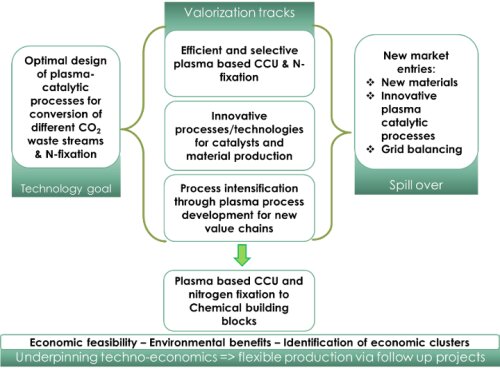PlasmaCatDesign
Aim
PlasMaCatDESIGN is a research consortium that aims to develop design rules for (catalytically activated) packing materials to enhance plasma-activated gas phase conversion reactions to basic chemicals. By understanding the material - properties – activity correlation we target enhanced conversion, selectivity and energy efficiency of plasma driven chemical production for two selected industrially and environmentally relevant model reactions in which plasma catalysis can have specific advantages: selective CO2 conversion towards C1-C5 (oxygenated) hydrocarbons and inorganic amine synthesis (nitrogen fixation).
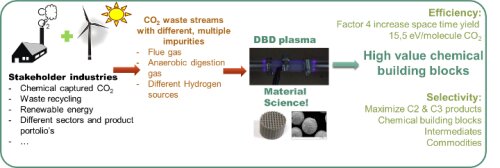
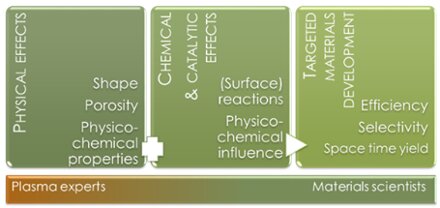
Impact
Impact
We tend to progress the field of plasma catalysis in its wide application beyond the reactions and reactors studied here.
At the same time we:
- Create breakthroughs in CO2 utilization and process intensification for nitrogen fixation.Facilitating the transition to renewable energy in chemical industry
- Valorizing waste gases.
- Developments of structured hierarchical packing materials/catalysts to progress specific material design, through advanced manufacturing, coating and activation of (plasma) catalytic packing material.
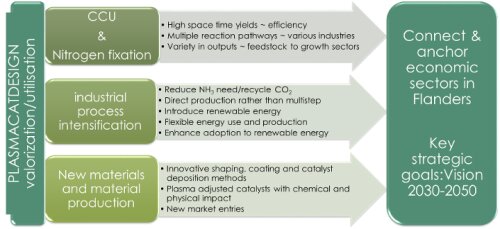
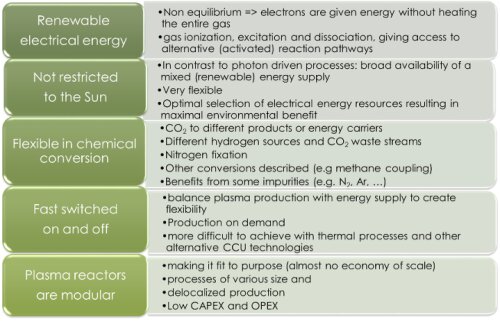
Focus
Focus
We will particularly study:
- underlying mechanisms and structure-activity correlations in plasma catalysis
- demonstrate the advantages and limitations of using alternative reaction pathways in plasma at mild conditions (near ambient temperature and pressure) for dry reforming reactions and gas phase conversion in general
- prove the concept of producing inorganic amines selectively (nitrogen fixation)
- demonstrate techno-economics and environmental benefits of plasma catalysis and how it is affected by different types of uncertainty, identifying key R&D targets.
Note: in literature, plasma catalysis indicates the implementation of materials into the plasma phase, creating performance enhancement, even though the enhancing effect might be physical rather than what is understood as catalysis thermally. In plasma research, this is all grouped in one term “plasma catalysis”.
